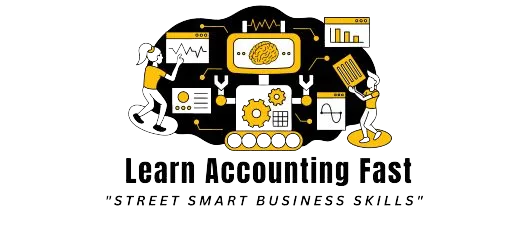How to Use AI to Automate a Small Business Operation
Artificial Intelligence (AI) is no longer just for large corporations; small businesses can use AI tools to save time, reduce costs, and increase efficiency.
Here is a step-by-step guide on how you can use AI to automate your business operations.
Each section provides actionable advice and links to relevant tools to get started right away.
Step 1: Identify Operations to Automate
Start by identifying the tasks in your business that are repetitive, time-intensive, and critical to operations. These typically include:

Customer Support Automation: Leverage AI to provide instant, 24/7 support for common customer inquiries.
AI-powered chatbots can handle repetitive queries, manage FAQs, and assist with basic troubleshooting.
They can also escalate complex issues to human representatives when necessary, ensuring a seamless customer experience.
Ai Marketing Tools: Automate repetitive tasks such as creating, scheduling, and sending email campaigns to specific audience segments using tools like Mailchimp or HubSpot.
Use AI to analyze customer behavior and suggest the best times to post on social media, optimize ad performance with predictive analytics, and even generate tailored content for different platforms. These tools not only save time but also improve engagement and return on investment.
Automated Accounting Solutions: Simplify financial management with AI-driven tools.
Automate the generation of invoices to ensure timely billing and reduce human error.
AI can also reconcile transactions by matching receipts to expenditures, flagging discrepancies in real-time. Additionally.
AI-powered payroll systems streamline employee payments, tax deductions, and compliance, ensuring accuracy and saving hours of manual work. Inventory Management with AI :
AI can revolutionize inventory management by enabling real-time stock tracking, accurate demand forecasting, and automated reordering systems.
Inventory Management with AI : AI can revolutionize inventory management by enabling real-time stock tracking, accurate demand forecasting, and automated reordering systems.
Tools like TradeGecko and Cin7 can analyze past sales data and market trends to predict demand, preventing both overstock and stockouts.
Additionally, these tools can automatically place restocking orders with suppliers when inventory reaches a set threshold, ensuring a smooth supply chain and uninterrupted operations.
To streamline this process, create a detailed list of these operations. Evaluate how much time each task consumes and its overall importance to your business's success. Focus first on automating tasks that are both high-impact and repetitive.
Step 2: Choose the Right AI Tools
Cost saving Ai Tools make automation easy. Below are AI tools for different business operations
Customer Service Automation:
Use ChatGPT or Zendesk AI for automated chatbots. These tools handle common customer queries 24/7.
Link: ChatGPT | Zendesk AI
Ai for Marketing Automation:
Ai Solutions to Automate Accounting:
Use QuickBooks Online or Xero for automated bookkeeping and financial reporting.
Link: QuickBooks Online | Xero
Inventory Management with Ai Tools:
Platforms like TradeGecko or Cin7 monitor inventory levels and streamline supply chain operations.
Link: TradeGecko | Cin7
Step 3: Integrate AI Tools into Your Workflow
Once you have selected the tools, the next step is to integrate them into your operations to maximize their efficiency.
This process involves detailed configuration, proper alignment with existing workflows, and rigorous testing to ensure seamless functionality.
Here’s how:
1. Set Up the Ai Tools:
Sign up for the platforms you’ve chosen by visiting their official websites.
Use any available free trials or demos to familiarize yourself with their features and assess compatibility with your business needs.
During signup, ensure you select the appropriate pricing plan that aligns with your usage volume and operational requirements.
Use their tutorials, step-by-step guides, or customer support services to facilitate a smooth onboarding process.
Many platforms offer video tutorials, detailed documentation, and live chat support to ensure you can set up the tools correctly and integrate them into your existing workflows without difficulty.
Don’t hesitate to contact their support team for personalized assistance if needed.
2. Connect Existing Systems to Ai Automation:
Many AI tools integrate seamlessly with commonly used business software, including CRMs like Salesforce, email marketing platforms like Mailchimp, and accounting systems like QuickBooks or Xero.
These integrations enable efficient data sharing, automated workflows, and centralized management, significantly reducing manual effort and enhancing overall operational efficiency.
For example, connect HubSpot to your email and social media accounts to streamline your marketing automation processes.
By integrating these platforms, you can centralize campaign management, schedule posts, and analyze engagement metrics from one dashboard.
This integration helps in tracking customer interactions across channels, ensuring consistency in communication and maximizing the impact of your marketing efforts.
3. Train The AI
Many AI tools integrate seamlessly with commonly used business software, including CRMs like Salesforce, email marketing platforms like Mailchimp, and accounting systems like QuickBooks or Xero.
These integrations enable efficient data sharing, automated workflows, and centralized management, significantly reducing manual effort and enhancing overall operational efficiency.
For example, connect HubSpot to your email and social media accounts to streamline your marketing automation processes.
By integrating these platforms, you can centralize campaign management, schedule posts, and analyze engagement metrics from one dashboard.
This integration helps in tracking customer interactions across channels, ensuring consistency in communication and maximizing the impact of your marketing efforts.
4. Test the Ai Automation Integration
Run small test campaigns or simulations to validate the functionality and effectiveness of the tools.
Begin by creating controlled scenarios that mimic real-world applications of the AI tools. Test their response accuracy, processing speed, and integration with existing systems.
Document any issues encountered during the test phase and address them before fully implementing the tools into your operations.
This approach minimizes disruptions and ensures the tools deliver optimal results from the outset.
Collect feedback from your team and customers.
Step 4: Monitor and Optimise Performance with Ai
AI tools improve over time, but monitoring their performance is essential.

1. Track Key Ai Automation Metrics:
For customer support: Track response time and resolution rate to measure the effectiveness of your AI tools.
Response time reflects how quickly your AI system addresses customer queries, while resolution rate highlights its success in solving issues without human intervention.
These metrics help identify areas for improvement, such as refining chatbot scripts or enhancing integration with human support teams.
For marketing: Monitor open rates, click-through rates, and conversions to measure the success of your campaigns.
Use these metrics to identify which strategies work best, optimize your messaging, and target your audience effectively.
AI-powered tools like HubSpot provide detailed insights and actionable recommendations to boost engagement and drive sales.
For accounting: Ensure reports are accurate, timely, and insightful by using AI to generate comprehensive financial statements, detect anomalies, and provide actionable insights.
AI tools like QuickBooks or Xero can automatically categorize expenses, track tax deadlines, and ensure compliance, giving business owners a clearer understanding of their financial health without manual intervention.
2. Adjust Settings:
Use analytics provided by tools like Mailchimp or QuickBooks to refine settings by closely monitoring performance metrics such as user engagement, transaction accuracy, and campaign efficiency.
Analyze data trends to identify patterns, make data-driven adjustments, and fine-tune the settings to achieve optimal outcomes tailored to your business needs.
Update chatbot responses based on customer feedback to improve accuracy and relevance.
Regularly analyze feedback from interactions to identify gaps in the chatbot's knowledge or tone.
Incorporate these insights to fine-tune responses, ensuring the chatbot consistently aligns with customer expectations and enhances their overall experience.
3. Scale Up With AI Automation
Once you see results, expand automation to other areas of your business.
For example, transition from simple email campaigns that only send periodic updates to fully automated customer retention programs.
These programs can segment your audience based on behavior, such as purchase history or engagement levels, and send personalized messages like loyalty rewards, reminders for repeat purchases, or re-engagement offers.
This approach builds stronger customer relationships and improves lifetime value.
Step 5: Stay Updated on AI Trends
AI technology evolves rapidly. Staying informed ensures you can leverage the latest advancements:
Subscribe to AI Newsletters: Stay updated with newsletters like AI Trends.
Attend Webinars: Platforms like AI for Small Business offer free educational resources.
Experiment with New Tools: Periodically review emerging AI tools that could add value to your operations.

Stay proactive by exploring new platforms, attending AI product launches, and leveraging free trials to test functionalities.
Tools evolve rapidly, so experimenting ensures your business stays competitive by incorporating cutting-edge features and solutions tailored to emerging challenges.
Example Workflow: Automating Customer
Support
Let’s take automating customer support as an example:
Choose a Tool: Select ChatGPT for a conversational AI chatbot capable of handling complex queries with natural language understanding, or Zendesk AI for a customer service platform with built-in analytics and multilingual support. Evaluate your specific business needs to decide which tool aligns best with your goals,
such as seamless integration with existing platforms or advanced reporting capabilities.
Set Up a Chatbot: Utilize user-friendly drag-and-drop interface available in platforms like ChatGPT or Zendesk AI to design your chatbot flow. Begin by mapping out the customer journey and outlining the key interaction points. Include welcome messages, decision tree options for common inquiries, and fallback responses
for unrecognized queries. Ensure the flow is intuitive and aligns with your brand's tone of voice to enhance the user experience.
Train the AI Bot: Build a comprehensive knowledge base by adding commonly asked questions and their answers, ensuring relevance and clarity. Use past customer interactions and analytics to identify frequently encountered issues. Incorporate detailed yet concise responses that mirror your brand’s tone and values. Update this database periodically to include new queries or reflect changes in your offerings.
Integrate: Seamlessly connect the chatbot to your website and social media platforms to maximize its reach and utility. Ensure proper integration by embedding chatbot scripts into your website’s code or using platform-specific plugins. For social media, link the chatbot to your Facebook Messenger, Instagram Direct, or other communication channels to provide instant assistance. Test all integrations thoroughly to verify smooth performance across channels.
Monitor: Leverage advanced dashboards to continuously track performance metrics like response times, resolution rates, and user engagement.
Analyze these insights in real time to identify trends, detect anomalies, and spot areas for optimization.
Regularly review this data to adjust workflows, improve system responses, and ensure the AI tools align with evolving business objectives and customer expectations.
Get Started Today
AI can revolutionize how your business operates.
Start small, choose one process to automate, pick a tool, and integrate itinto your workflow.
Click on the links provided to explore AI tools and start your journey to a more efficient, automated business.
Take the first step today. Streamline your operations, save time, and focus on growing your business with AI Automation tools.
It's time to thrive in these trying times by taking advantage of this opportunity for personal growth.
Be the greatest you can be… Join us, click the link below for short, sharp, simple video courses that give you confidence and street-smart businessskills to simplify accounting and focus on growing your business to succeed.
Latest Posts
The Six Laws of
Wealth Creation
The Six Laws of Wealth Creation. These timeless actions work in 2025’s rapid-change environment and give you calm, repeatable steps to grow money.....
How to Read Business
Financial Reports
A Story of Business Secrets Hidden in Reports
Sarah sat in her office staring at a thick folder of financial reports. Sales, costs, cash flow....
The Millionaire
Mind in Action
Timeless Wealth, Flow, and Power from Robert Kiyosaki,Frank Kern, Tony Robbins
and Open Ai......
Why Cost Control Is the Forgotten Key to Profitability
Most entrepreneurs chase sales growth like it’s the only thing that matters.They spend thousands on ads, new products, and fa ncy offices.....
Master Prompts For
Financial Analysis
The Complete Small Business Guide to Financial Analysis: Formulas, Examples, and Tips.These are super-powerful questions you can ask an AI to help..
How To Solve Any Business
Problem With Ai
AI can help you solve all of these faster, smarter, and more affordably, if you know how. This guide will show you exactly how to do that.........
Disclaimer: The content shared on this blog and in these videos is for informational and educational purposes only. Despite my 30 years of experience as a business owner, I am not a certified financial advisor, accountant, or legal professional. The insights and tips shared are based on personal experiences and should not be taken as professional financial or legal advice. For financial, legal, or professional advice, please consult with a certified professional in the respective field. I disclaim any liability or responsibility for actions taken based on any information found in this blog or these videos.
Copyright Learn Accounting Fast - All Rights Reserved 2025









Facebook
Instagram
X
LinkedIn
Youtube